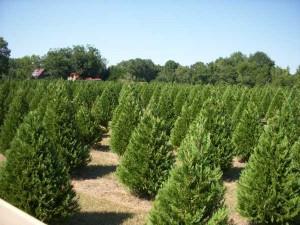
History of Christmas Trees
- The use of evergreen trees to celebrate the winter season occurred before the birth of Christ.
- The first decorated Christmas was in Riga, Latvia in 1510.
- The first printed reference to Christmas trees appeared in Germany in 1531.
- Nineteenth century Americans cut their trees in nearby forests.
- Christmas trees have been sold commercially in the United states since about 1850. Until fairly recently, all Christmas trees came from the forest.
- The first Christmas tree retail lot in the United States was started in 1851 in New York by Mark Carr.
- In 1900, large stores started to erect big illuminated Christmas trees.
Christmas Trees and the Environment
- Growing Christmas trees provides a habitat for wildlife.
- Recycled trees have been used to make sand and soil erosion barriers and been placed in ponds for fish shelter.
- Christmas trees remove dust and pollen from the air.
- Artificial trees will last for six years in your home, but for centuries in a landfill.
- 59 percent of real Christmas trees harvested are recycled in community programs.
- An acre of Christmas trees provides for the daily oxygen requirements of 18 people.
Artificial / Fake Trees
- In 2002, 21% of United States households had a real tree, 48% had an artificial tree and 32% had no tree.
- Most fake (artificial) trees (85%) in the U.S. are imported from China.
- Real Christmas trees are involved in less than one-tenth of one percent of residential fires and only when ignited by some external ignition sources.
Christmas Tree Numbers
- Thirty-four to thirty-six million Christmas trees are produced each year and 95 percent are shipped or sold directly from Christmas tree farms.
- 28 million Christmas trees were sold in 2001.
- More than one million acres of land have been planted in Christmas trees. The industry employs over 100,000 people. Many Christmas tree growers grow trees on a part-time basis to supplement farm and non-farm income.
- More than 2,000 trees are usually planted per acre. On an average 1,000-1,500 of these trees will survive. In the North, maybe, 750 trees will remain. Almost all trees require shearing to attain the Christmas tree shape. At six to seven feet, trees are ready for harvest. It fighting heavy rain, wind, hail, pests and drought to get a mature tree.
- Christmas trees take an average of 7-10 years to mature.
- 100,000 people are employed in the Christmas tree industry.
- 98 percent of all Christmas trees are grown on farms.
Source:www.pickyourownchristmastree.org


